Sharing is caring so why do we not care?
Care-Mo
Sharing is caring, so why do we not care? Shared mobility vehicles are given far too little respect because they do not share anything with the user and most of the vehicles are simply not designed for sharing. Users on the other hand have little responsibility towards the product other than paying for it and rarely recognize the value of such products. The CARE-MO project, a small fully autonomous vehicle with a unique architecture, aims to change this through involving the users, a strong human and nature centered focus, a seamless holistic service, it is possible to create transparency, connections between the users but also with the vehicle. As a part of the solution for the nowadays mobility issues within urban areas it is built against vandalism, from and for recycling and for sharing. All to reach a higher level of sharing and caring in the future.
Project Information
Developing a purpose-built vehicle to transform the design of shared mobility products requires rethinking traditional vehicle architectures, which often become overly complex due to the demand for increased comfort.
This concept serves as a pilot project for Berlin in 2032, a city renowned globally for its vibrant culture and innovative spirit. Despite its dynamic reputation, Berlin is expected to fall short of its 2030 carbon emission reduction targets. Electric vehicles equipped with autonomous driving technology and designed for shared use offer a promising part of the solution to meet these crucial goals.
Enabling widespread access to automated vehicles demands collaboration among various stakeholders, including policymakers, urban planners, community initiatives, transport operators and automobile manufacturers. By working closely together, these stakeholders can drive significant changes in transportation.
In this envisioned scenario, expected measures include stricter speed limits, an infrastructure usage fee tailored to factors such as vehicle size, motor type, and sustainability. These initiatives aim to reduce urban traffic congestion and promote the adoption of shared mobility vehicles. Moreover, the introduction of a mobility allowance for each resident could further support these endeavors.
The concept is aiming for connecting users with each other but also with the vehicle itself. Through its functionalities it offers opportunities to build synergies across and at the same time it is rewarding and surprising if the users are willed to take care of it in different ways all framed by a holistic application.
Method
At the beginning of the project, as part of the research phase, it was essential to find the right interview partners. In this case it was a mobility expert who is involved in ongoing Lighthouse City projects in the Netherlands, a founder/director of a product design studio from Berlin that mainly works on small urban mobility solutions and lifestyle products and the founder of a B2B car sharing platform from Berlin.
The aim was to identify the current problems of inner-city traffic, to determine the weak points of shared mobility products and services, to grasp the complexity of the topic and to generate initial ideas from the findings, to define attributes of the concept to be created and to develop solutions for the problems found.
The three defined attributes—built against vandalism, built from and for recycling, and last but not least, built for sharing—form the backbone of the concept and run like a common thread through the entire design.
Subsequently, during an intensive ideation and exploration phase an unconventional vehicle architecture was developed that makes it possible to integrate new kind of different functionalities in both the interior and the exterior and to realize them.
While using AI tools such as Vizcom a wide range of exploration designs were created in an iterative process for details such as light signatures and rims, but also for larger components such as seats and interaction panels. In addition to conventional hand sketches and Photoshop renderings, simplified graphical icons were also used as an input.
This type of workflow was not only interesting to explore but also highly surprising as it helps to create designs that sometimes deviate from the actual intention or one's own style and thus enables new and refreshing perspectives.
Result
In addition to the relatively small footprint, great importance was attached to visually reducing the interior and exterior architecture and creating many mirrored identical parts in order to minimize the complexity of the hypothetical production of such a product. This can be seen in the example of the interaction panel, the seat architecture, the interior door structure and the handrails and the platform on the exterior.
The components are function-driven and designed to express robustness while being easily replaceable by service personnel if necessary. Due to the uniformity of the parts and the various color options available, it is conceivable that the vehicles, over years of use, can acquire a very individual appearance. Ultimately, like each user, they can possess a unique character of their own.
The user profile saved in the application and the current sharing level is unlocking hidden assets within the interaction panel, like a table, a phone slot and a multicolor ink screen which will visually align to the application which is used.
The seating and the backrest of the seat are same parts and will unlock when the user is approaching the vehicle. Before the journey is starting it may ask for some action of caring and along the way the level of the user profile can be increased by sharing the vehicle completely or parts of it like the rear platform for goods or people which is then unlocking more assets and surprises along the journey. Care-Mo can’t solve every issue of shared mobility products but it can serve as an aspirational start for reimagining those.
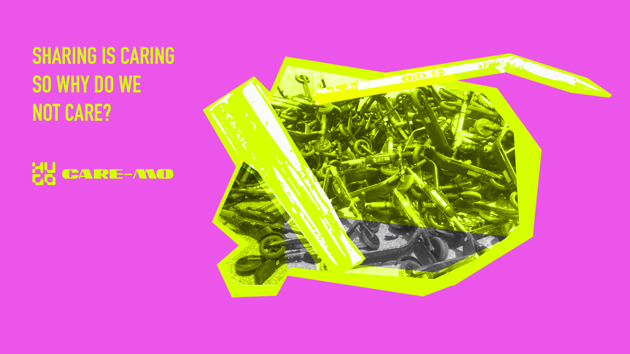
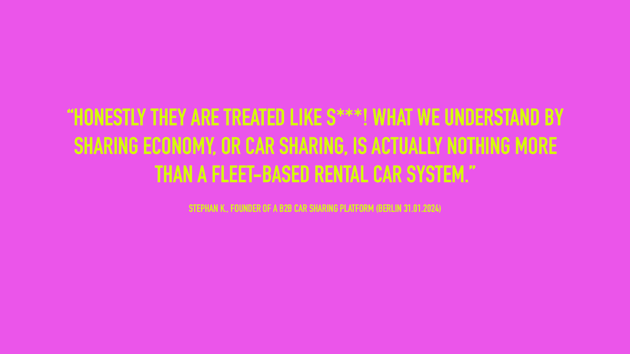
Shared vehicles are not treated with respect
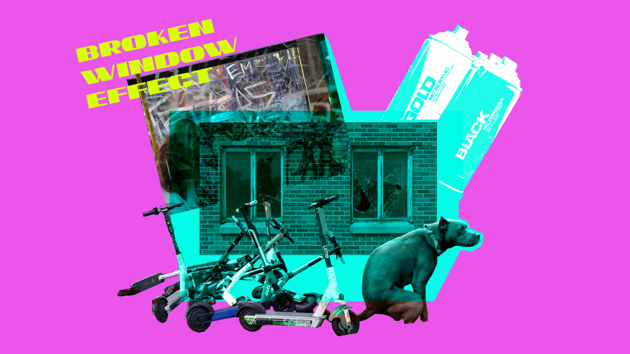
Urban phenomenon “The Broken Window Effect”
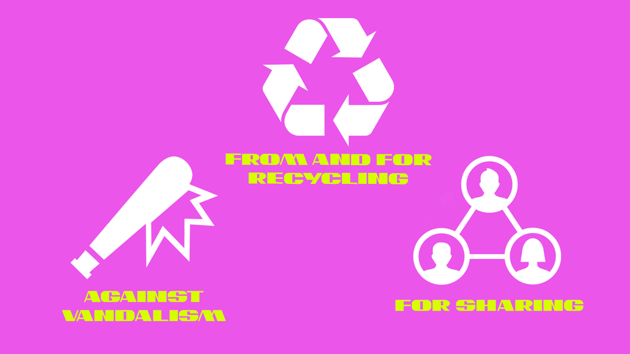
The attributes

Berlin (Germany) as the starting point of the pilot project
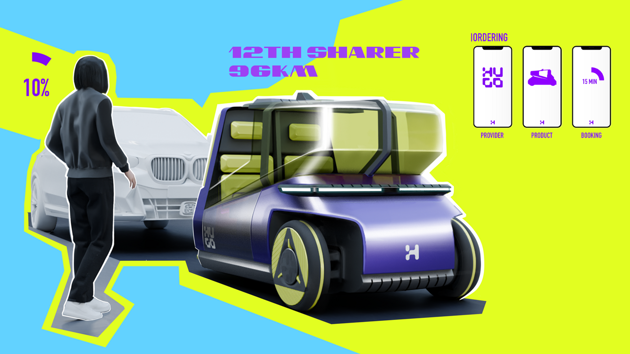
Arriving
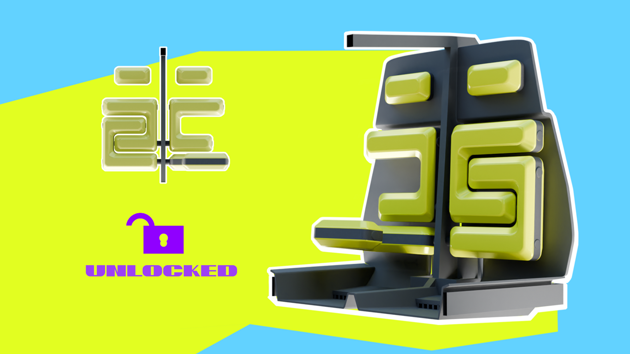
Unlocked seats (same parts for backrest and seating)
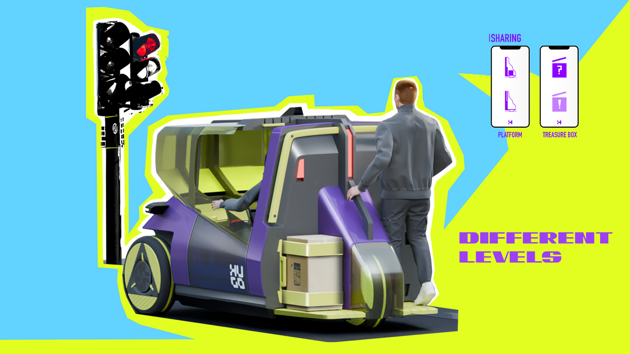
Sharing
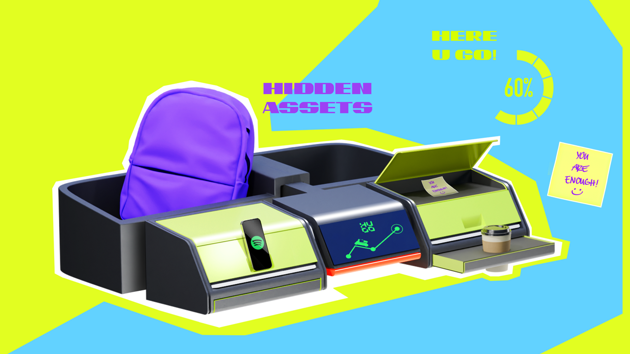
Dashboard with hidden assets enabled by profile level
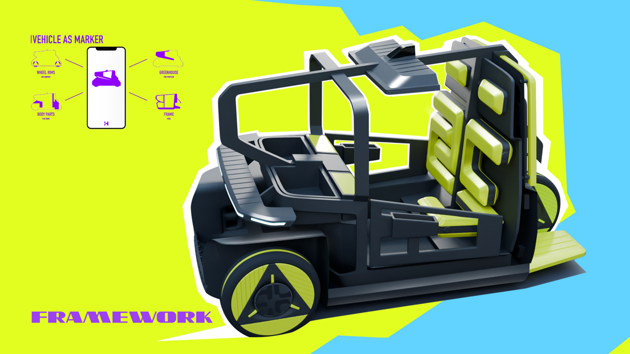
Transparency-Vehicle as a marker
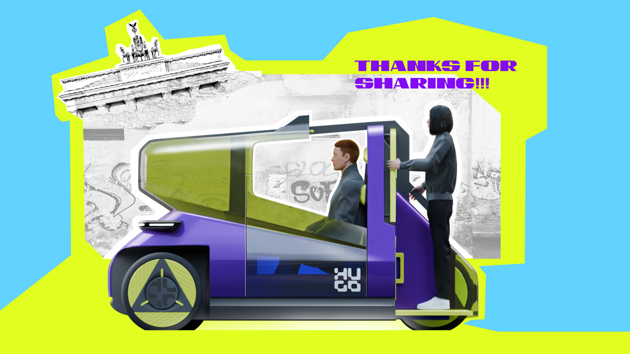
Side-view in shared mode











